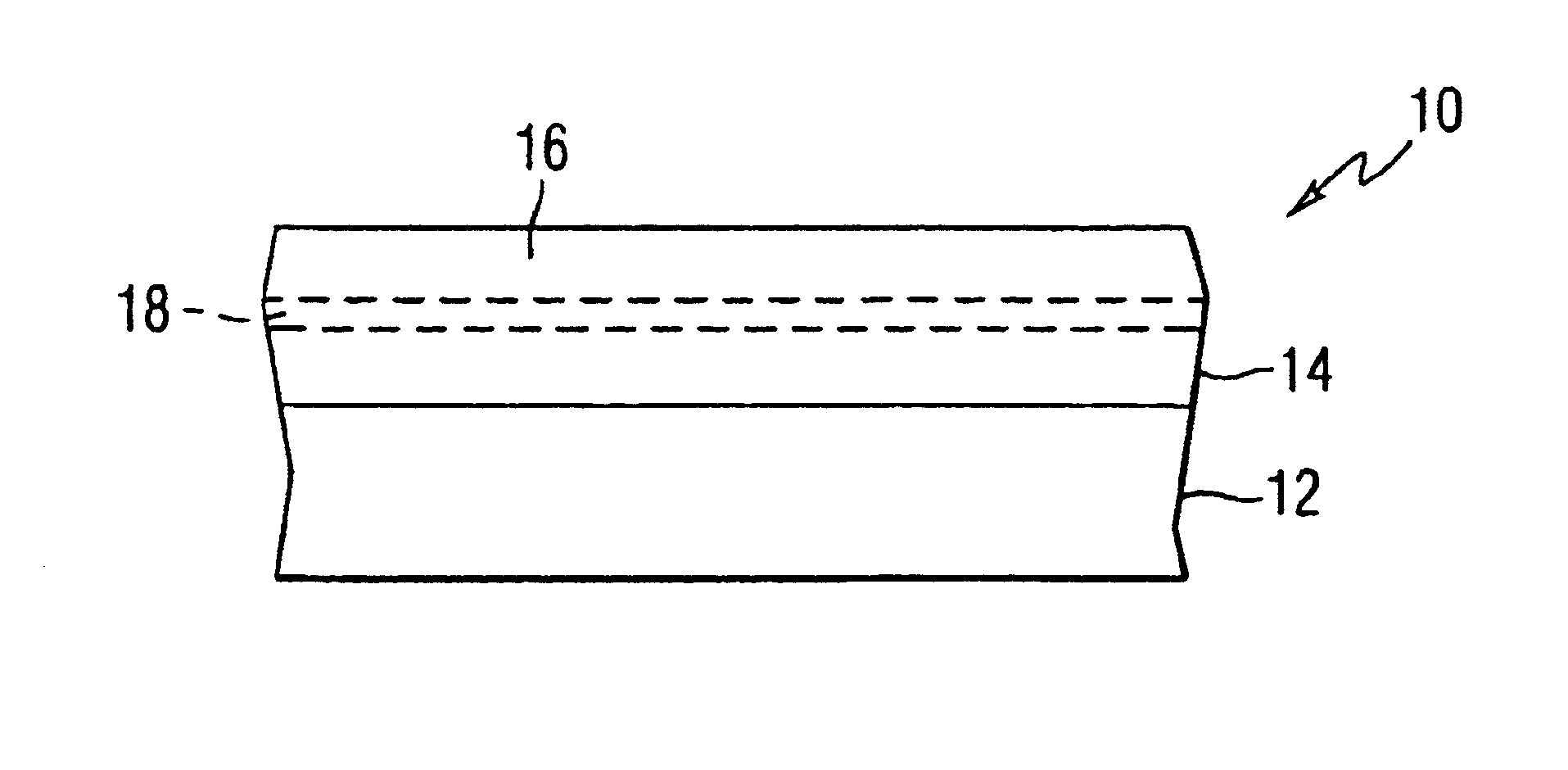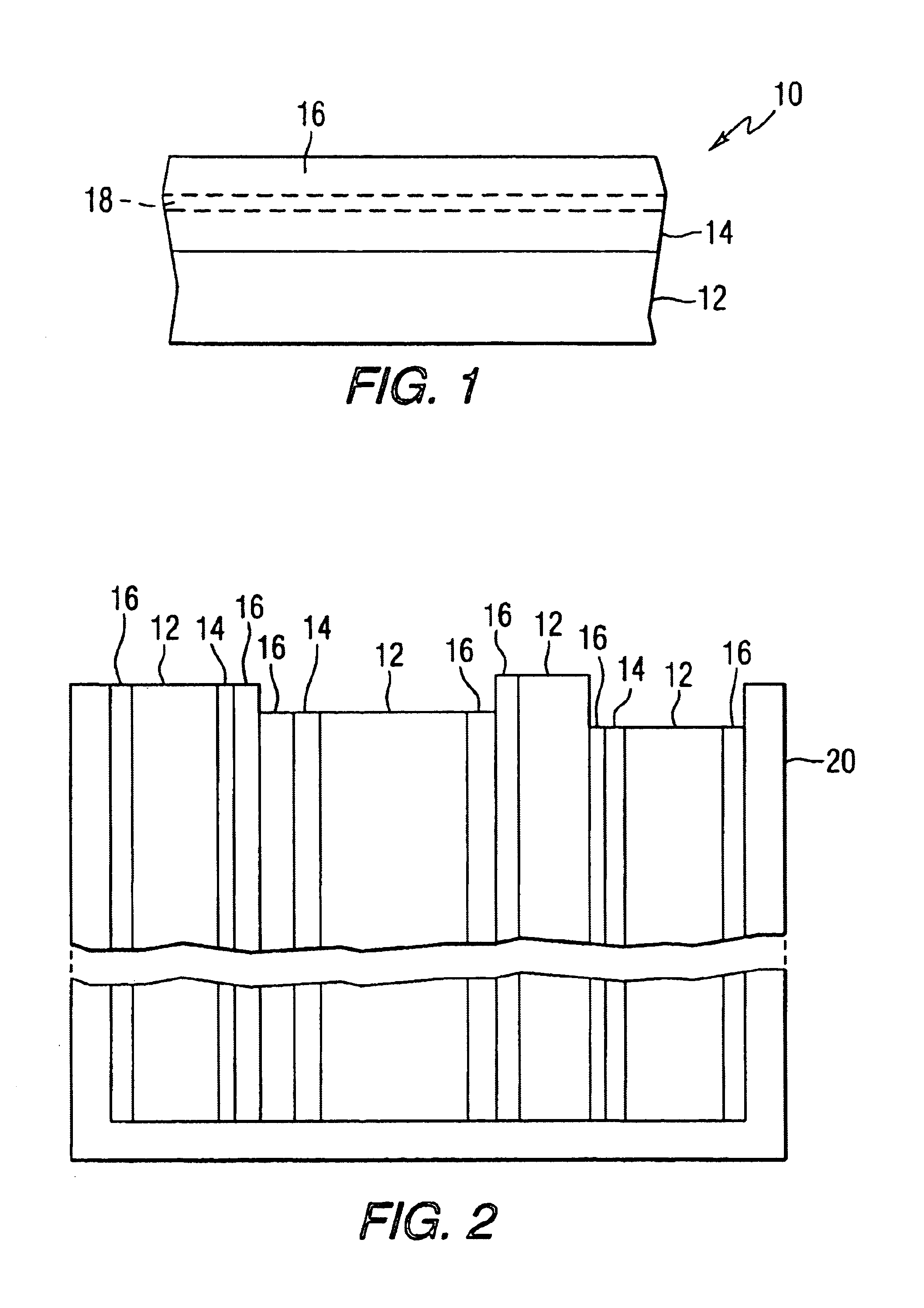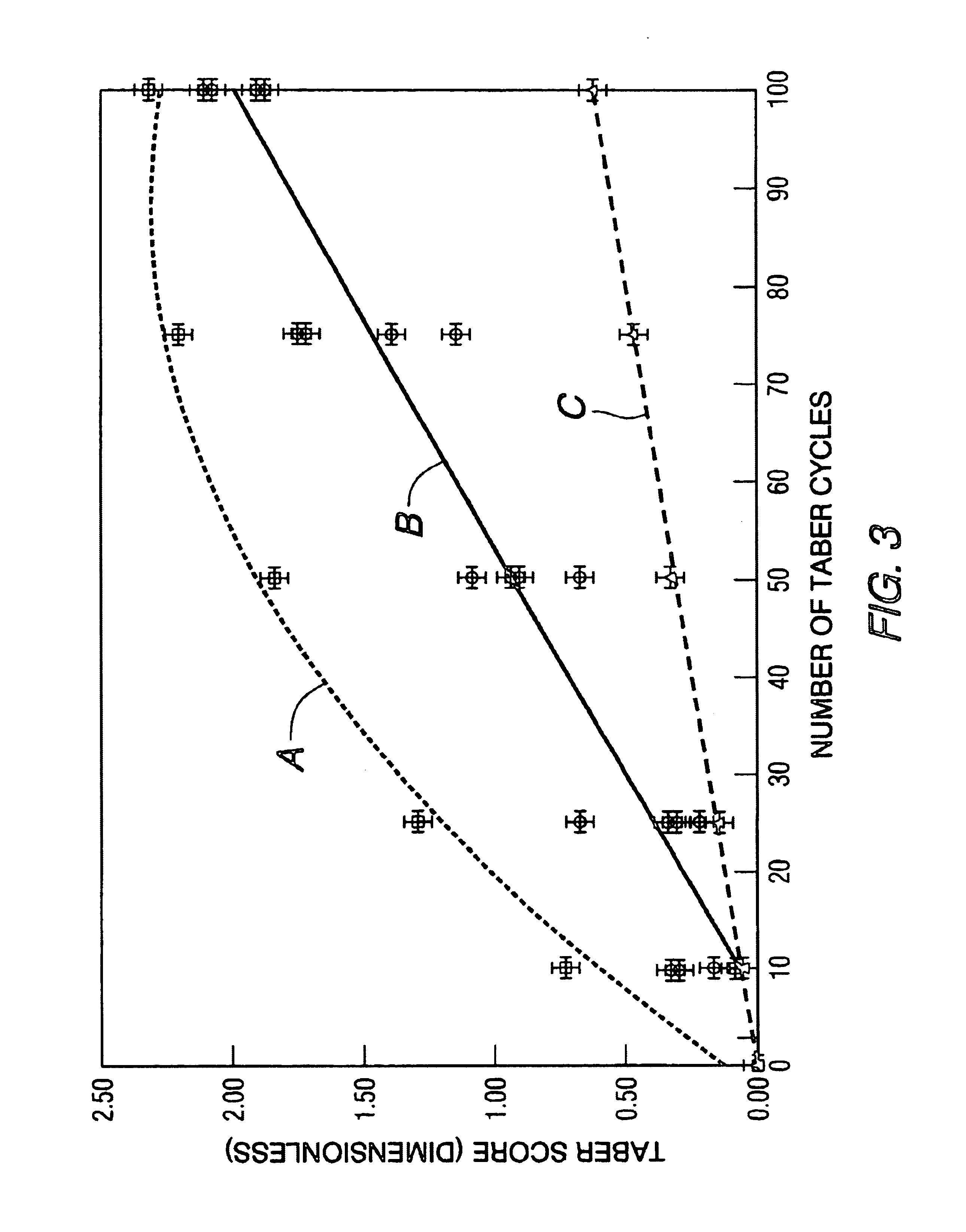Light-transmitting and/or coated article with removable protective coating and methods of making the same
a technology of protective coating and light-transmitting coating, which is applied in the direction of lighting and heating apparatus, charge manipulation, furniture, etc., can solve the problems of affecting the uniformity of the coating, so as to achieve the effect of promoting uniform heating, low emissivity and high emissivity
- Summary
- Abstract
- Description
- Claims
- Application Information
AI Technical Summary
Benefits of technology
Problems solved by technology
Method used
Image
Examples
example 1
285 ml of deionized (DI) water was heated to a temperature of about 80° C. Using a magnetic stir bar, the water was vigorously stirred while slowly adding 15.0008 g of Airvol® 103 polyvinyl alcohol (PVOH) (Airvol® 103, as well as the other Airvol® materials discussed in the Examples, are commercially available from Air Products and Chemicals, Inc.). The solution was continuously stirred and maintained at a temperature of about 85° C. for about 15 minutes. Then, the heating was stopped but stirring continued while allowing the solution to cool down to room temperature (approximately 20° C.). This procedure resulted in a 5 weight percent (“wt. %”) solution of PVOH in DI H2O. Using a polyethylene pipette, a quantity of the PVOH solution was applied as a small puddle to a 4 inch×4 inch (10 cm×10 cm) coupon of glass 2 millimeters thick and having a silver based, multi-layer, solar control, MSVD applied coating. This puddle was then more uniformly distributed over the surface of the sampl...
example 2
A 5 wt. % solution of Airvol® 203 polyvinyl alcohol (PVOH) was prepared as in Example 1. The solution was then poured into a Sure Shot® Model A® air spray canister, commercially available from Milwaukee Sprayer Manufacturing Company, Inc., and pressurized to approximately 100 psi (7 kg / sq. cm). The PVOH solution was sprayed onto a test coupon of glass measuring approximately 12 inch×12 inch (30.5 cm×30.5 cm) and 2 millimeters thick and having the same functional coating as in Example 1; two passes and a spray tip-to-substrate distance of about 6 inches (15.2 cm) were used. After spraying, the PVOH coating was dried under a heat lamp for about 5 minutes. After the PVOH coating had dried, a tungsten carbide glass cutting hand tool was used to score the test coupon for the purposes of cleaving it into nine 4″×4″ (10 cm×10 cm) pieces. The piece cut from the center of the coupon was weighed and then subjected to a modified Taber test for 100 cycles as described in Example 1. After the Ta...
example 3
Twenty-five (25) ml of Spraylat®“A” polymer aqueous dispersion (commercially available from Spraylat Corporation) was mixed in an equal volume of deionized (DI) water at ambient room temperature; this is referred to as “50% concentrated Spraylat A dispersion”. Using a polyethylene pipette, a quantity of the 50% concentrated Spraylat A dispersion was applied as a small puddle to a 4 inch×4 inch (10 cm×10 cm) coupon of glass coated with the same functional coating as in Example 1. This puddle was then more uniformly distributed over the surface of the sample using a stainless steel drawdown bar at 0.005 inch (5 “mils” or 0.013 cm) wet film thickness. The sample was allowed to dry under a 250 W heat lamp for about five minutes. After drying, the sample was weighed; the uncoated weight of the sample was subtracted from the coated weight and the mass of the polymer coating on the sample was determined to be 0.3061 g, which provides an expected average mass per square foot of 2.8 g / ft2 (3...
PUM
| Property | Measurement | Unit |
|---|---|---|
| thickness | aaaaa | aaaaa |
| visible light transmittance | aaaaa | aaaaa |
| visible light transmittance | aaaaa | aaaaa |
Abstract
Description
Claims
Application Information
 Login to View More
Login to View More - R&D
- Intellectual Property
- Life Sciences
- Materials
- Tech Scout
- Unparalleled Data Quality
- Higher Quality Content
- 60% Fewer Hallucinations
Browse by: Latest US Patents, China's latest patents, Technical Efficacy Thesaurus, Application Domain, Technology Topic, Popular Technical Reports.
© 2025 PatSnap. All rights reserved.Legal|Privacy policy|Modern Slavery Act Transparency Statement|Sitemap|About US| Contact US: help@patsnap.com



